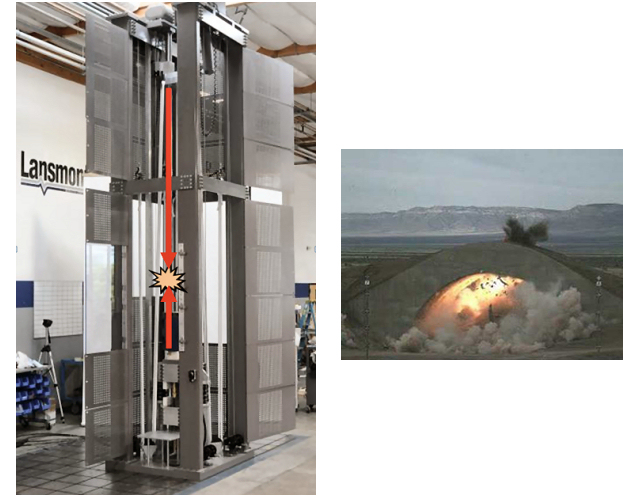For some applications the ability to survive extreme events is critical to the function. Consider the case of the fuze attached to a bunker buster bomb. In order to provide the intelligence for the munition, it must survive the impact and continue to count its way through the floors of a bunker or building before instructing the warhead to detonate.
This certainly is an extreme use case – and one that you definitely want to work right every time – the first time. The Air Force Research Laboratory (AFRL) at Eglin Air Force Base contracted Lansmont to design a test system they can use to help ensure just that. What resulted was our fastest shock test system ever - the HSX20 Shock System. It has a maximum velocity change capability of 150 feet per second.
That means the system is capable of controlled, programmable impacts at a speed of roughly 100 mph! Designing a machine that can simulate 100 mph impacts is no small feat.

The top portion of the HSX20 is similar to other high speed shock systems we have built in the past. What makes this particular machine so unique is that it incorporates a revolutionary new design feature—the “active” seismic base. The seismic base is a large steel mass that serves as the impact surface during the test.
Traditionally the seismic base remains stationary during the test. With the new active design, the impact surface is accelerated up towards the falling table during the shock test. The shock table and impact surface accelerating toward one another significantly boosts the impact energy level. We have deployed the active impact surface design technology in two other unique impact testing machines currently installed at the Army Research Laboratory in Adelphi, Maryland.
For further information on Lansmont Shock Test Systems, please Contact Jim Breault, Lansmont's Defense Market Specialist.